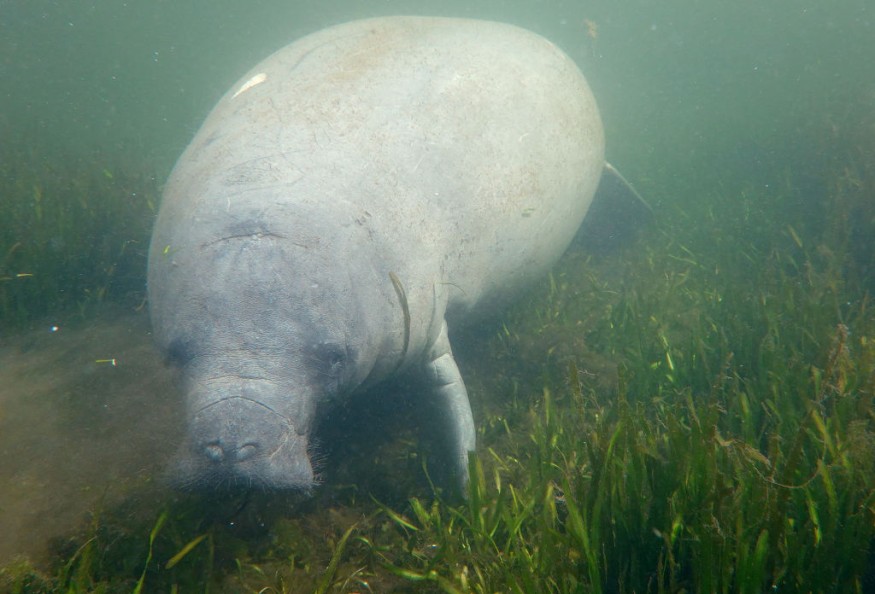The experimental feeding and rescue plan to save manatees from starvation had started off slowly as winter approaches Florida.
Wildlife officials found optimism as the cold weather drives the aquatic marine mammals to warm waters where they had established feeding stations along the state's east coast to entice wild manatees with romaine lettuce.
Officials said in a news conference that a total of 1,101 manatees died from starvation in 2021 records due to algae blooms that had decimated seagrass beds on which manatees depend, triggered by water pollution from various sources.
The typical five-year average of deaths is about 625.
The slow-moving marine mammals will soon begin to congregate at warm-water sites such as power plants as the ocean temperatures cool, and there may not be enough seagrass to sustain them, officials told the state Fish and Wildlife Conservation Commission.
Lettuce Feeding Program

As a result, this concern had led the lettuce feeding program, part of a joint group response to manatee deaths led by the Florida Fish and Wildlife Conservation Commission and the U.S. Fish and Wildlife Service. Feeding manatees on your own remains a violation of state and federal law.
"We have not documented animals foraging on the lettuce," said Ron Mezich, chief of the joint effort's provisioning branch. "We know manatees will eat lettuce."
Hundreds of these herbivorous marine mammals typically forage in warmer waters from natural springs and power plant discharges during winter, which is unusual in Florida.
"They're moving, but they are not being pressed by cold temperatures yet," said Tom Reinert, south regional director for the Fish and Wildlife Conservation Commission. "We expect that to happen."
In addition, officials are working with a number of facilities to rehabilitate distressed manatees, such as Florida zoos, the SeaWorld theme park and marine aquariums.
"Our facilities are at or near capacity," said Andy Garrett, chief of rescue and recovery. "These animals need long-term care. It's been a huge amount of work to date."
Read also: 'Extremely Exciting': Endangered Salmon Returns to California for the First Time Since 2004
"Use your dollars and not heads of lettuce"
Reinert himself sees the situation as dire. He believes that the root problem of the starvation are the polluted waters and therefore be addressed by the root.
Feeding lettuce especially by random people will cause more harm and distress than good as manetees associate humans with food, according to officials, and that people and manatees have struggled to coexist for decades.
According to state statistics, there are currently at least 7,520 manatees in Florida waters. The slow-moving mammals is close to restoring the endangered tag due to starvation deaths in spite bouncing back from being endangered to threatened.
Officials also appropriated $8 million in state money on several projects as an effort to save manatee habitat and planting new seagrass beds, however, as previously mentioned, it is going to be a slow process until the ultimate problem is not solved which is to improve polluted waters.
To help save distressed manatees, sightings can be reported to wildlife hotline or monetary donation through a state-sponsored fund or purchasing a Save the Manatee vehicle license plate.
© 2025 NatureWorldNews.com All rights reserved. Do not reproduce without permission.





